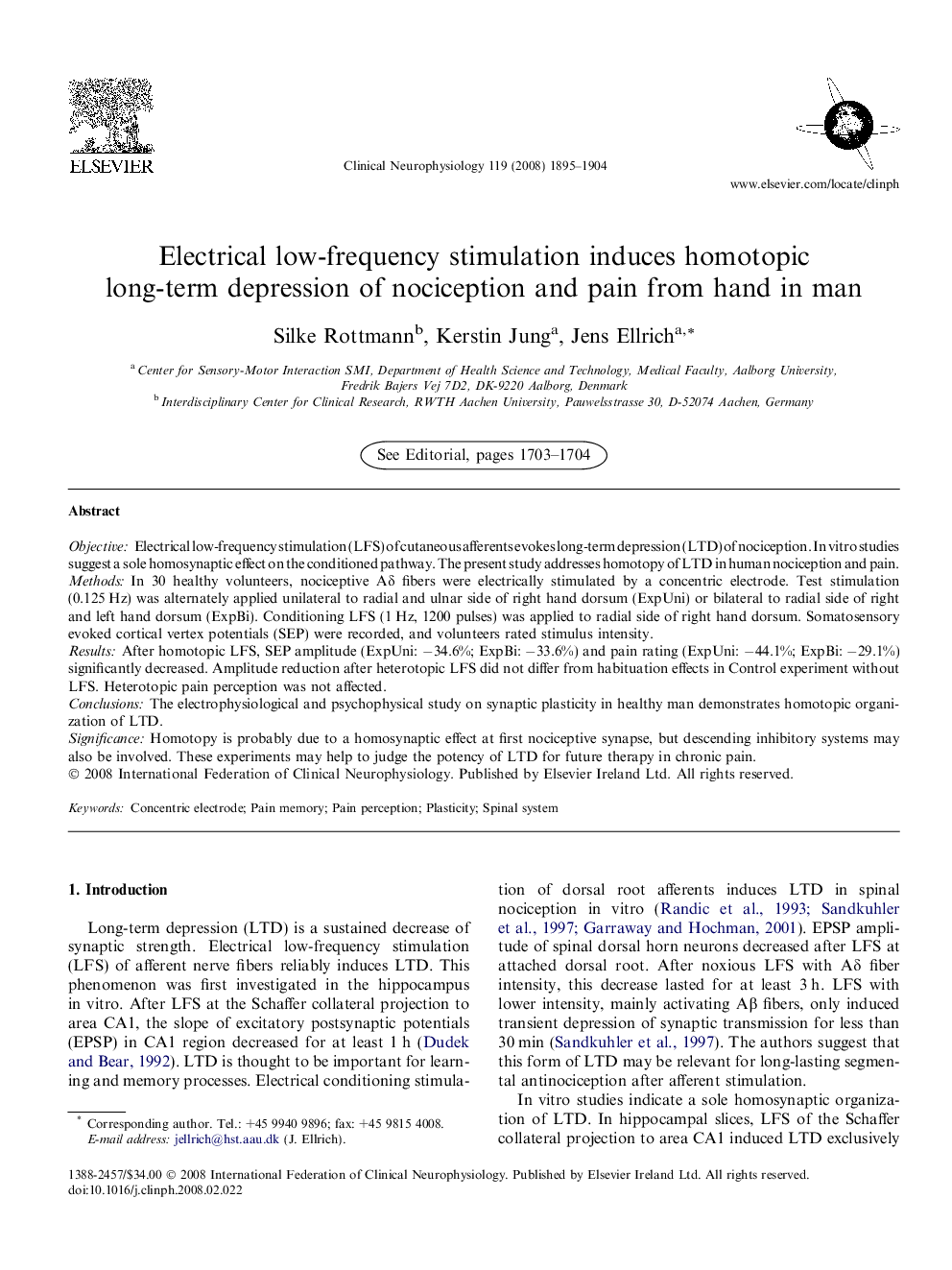| Article ID | Journal | Published Year | Pages | File Type |
|---|---|---|---|---|
| 3047759 | Clinical Neurophysiology | 2008 | 10 Pages |
ObjectiveElectrical low-frequency stimulation (LFS) of cutaneous afferents evokes long-term depression (LTD) of nociception. In vitro studies suggest a sole homosynaptic effect on the conditioned pathway. The present study addresses homotopy of LTD in human nociception and pain.MethodsIn 30 healthy volunteers, nociceptive Aδ fibers were electrically stimulated by a concentric electrode. Test stimulation (0.125 Hz) was alternately applied unilateral to radial and ulnar side of right hand dorsum (ExpUni) or bilateral to radial side of right and left hand dorsum (ExpBi). Conditioning LFS (1 Hz, 1200 pulses) was applied to radial side of right hand dorsum. Somatosensory evoked cortical vertex potentials (SEP) were recorded, and volunteers rated stimulus intensity.ResultsAfter homotopic LFS, SEP amplitude (ExpUni: −34.6%; ExpBi: −33.6%) and pain rating (ExpUni: −44.1%; ExpBi: −29.1%) significantly decreased. Amplitude reduction after heterotopic LFS did not differ from habituation effects in Control experiment without LFS. Heterotopic pain perception was not affected.ConclusionsThe electrophysiological and psychophysical study on synaptic plasticity in healthy man demonstrates homotopic organization of LTD.SignificanceHomotopy is probably due to a homosynaptic effect at first nociceptive synapse, but descending inhibitory systems may also be involved. These experiments may help to judge the potency of LTD for future therapy in chronic pain.
